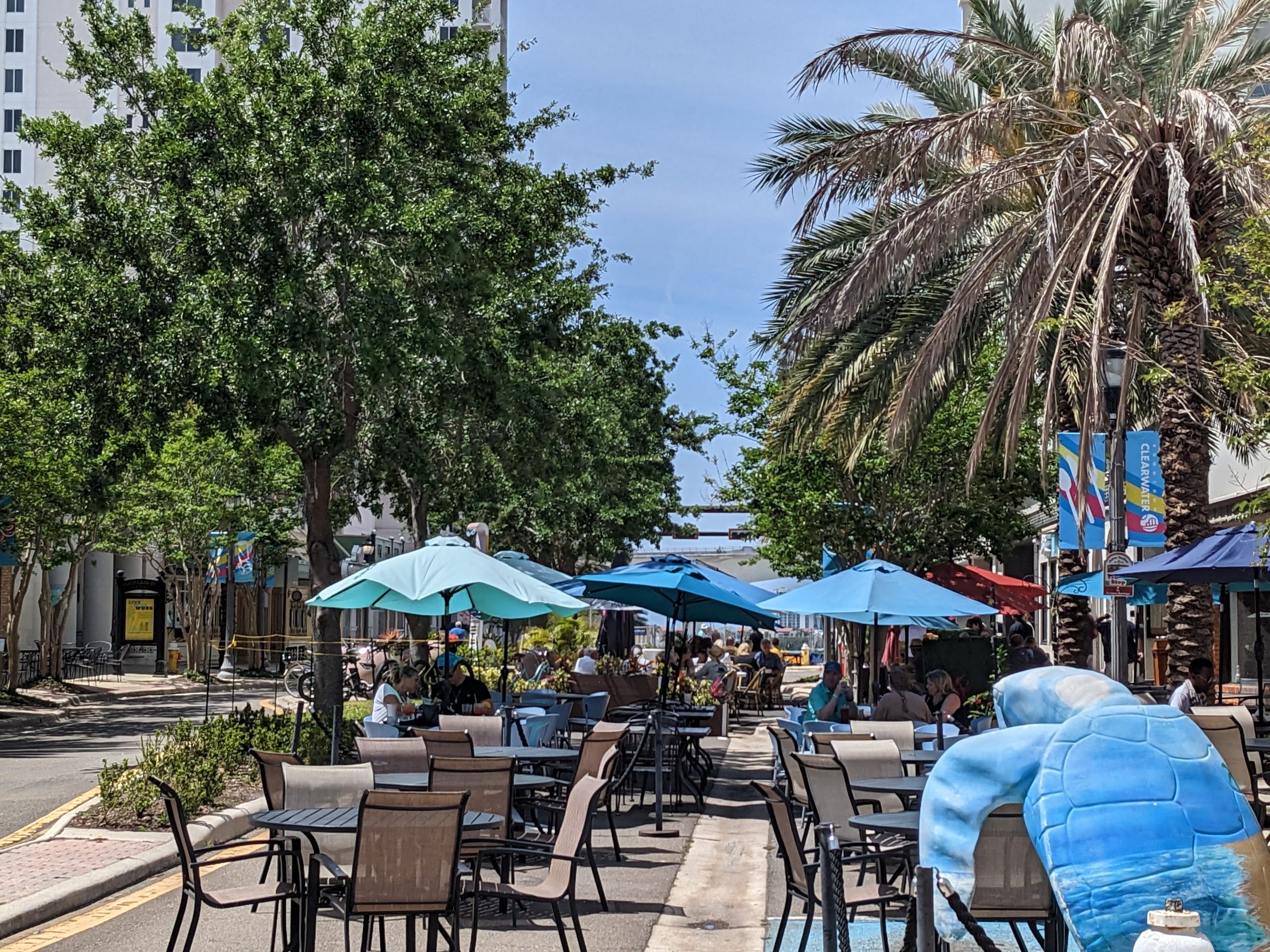By

Image Courtesy of Johnny Crosskey
In the Spring of 2020, New York City was in crisis. The onset of the COVID pandemic introduced a host of public emergencies, including overcrowded hospitals, struggling businesses, and an anxious citizenry eager to return to normalcy. The streets of New York were eerily quiet during the initial days of the pandemic. While it goes without saying that the COVID pandemic was a physical crisis, it was also an economic crisis for New York City. The restaurants, bars, and a host of other businesses that serve as the key driver of revenue generation were closed, which has downstream effects on millions. Public officials and community leaders had to quickly implement a solution to breathe new life into the city’s roads and avenues.
In April 2020, New York City found its solution with the launch of its Open Streets program.
Open streets transfer ownership of roads back to pedestrians and allow space for outdoor dining or other public amenities like art exhibits, musical performances, fitness classes, and educational events.
“The Open Streets program brings visitors, residents, and community stakeholders out of their normal day-to-day routines and creates a car-free environment where there is a new sense of interaction between the public and local businesses,” said Chris Sinclair , founder and president of The Anthem Group, a company involved in various industries such as live entertainment and large-scale event production.
While cities such as Chicago, Washington, D.C., and Atlanta adopted open streets initiatives during the pandemic, New York City was by far the leader in developing such programs. The New York Times reported that, at its height, New York City had opened up 83 miles of roads to pedestrians. And according to statistics from the state’s comptroller’s office, the presence and impact of this initiative were critical.
“During the pandemic, the state comptroller estimated the city was in danger of losing nearly 12,000 restaurants and 150,000 related jobs. . . These efforts threw an economic lifeline to the city’s eateries and proved a godsend for locked-down New Yorker,” explained Arturo Garcia-Costas, Program Officer for Local, National, and International Environment at the New York Community Trust.
Open streets programs were a “godsend” for local economies as well. A New York City Department of Transportation report from October 2022 studied the effect of pandemic-era Open Streets programs and concluded that they were a huge success for restaurants. It found that restaurants and bars on pedestrian-only roads performed much better than establishments on typical streets open to cars. Bars and restaurants on open streets posted more robust sales growth and were more likely to stay in business during the pandemic. Open Streets also had a more significant increase in the number of new restaurants and bars opening.
For example, restaurants and bars within the open street area on Ditmars Boulevard in Astoria, Queens, experienced a 44 percent increase in sales. Meanwhile, businesses on a portion of Ditmars Boulevard that didn’t open to pedestrians experienced a seven percent decline in sales. Overall, the restaurants and bars in the borough of Queens had a six percent growth in sales during the study period.
“Open Streets has been a life preserver for struggling businesses during the pandemic, and the program’s success confirms we can both sustain and grow economic vitality by reimagining the use of our public spaces.” Department of Transportation Commissioner Ydanis Rodriguez said in a press release.
Despite its positive impact on the economy in New York City and other communities, Open Street programs appear to be short-lived. Bloomberg reported that while 157 municipalities in 35 states instituted Open Streets programs during 2020 and 2021, 94 percent ended within six months of creation. Even permanent programs are less prevalent than they once were. New York City made its Open Streets program permanent in 2021, but many neighborhoods in the city have ended these initiatives. NYC once had 83 miles of open streets but only had around 20 miles as of Summer of 2022.
However, while there are not as many open streets in 2023 as there were during the height of the COVID pandemic, the many successes of these programs showcase the ability of local leaders to institute temporary initiatives to solve problems at the point when it’s most needed.
Magazine
Playmaker Events
Connect with playmaker